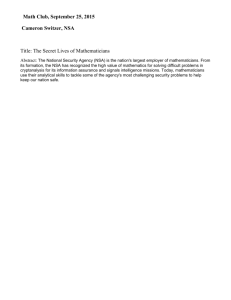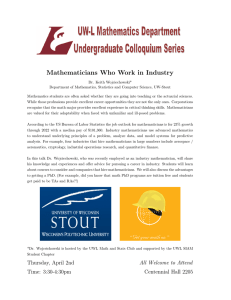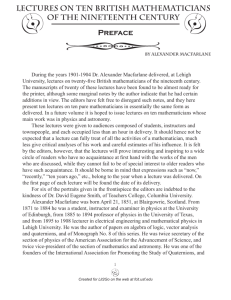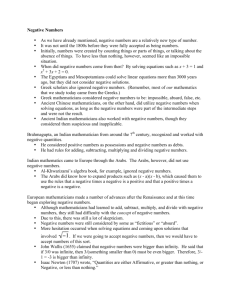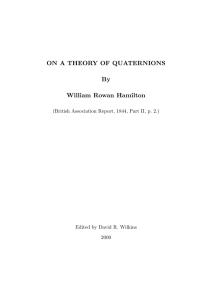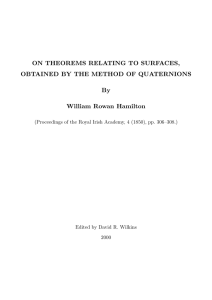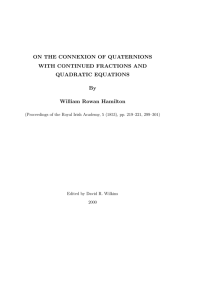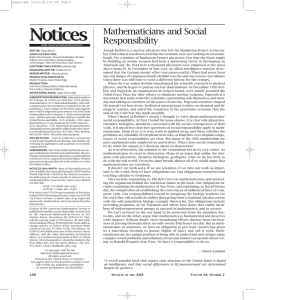quaternions
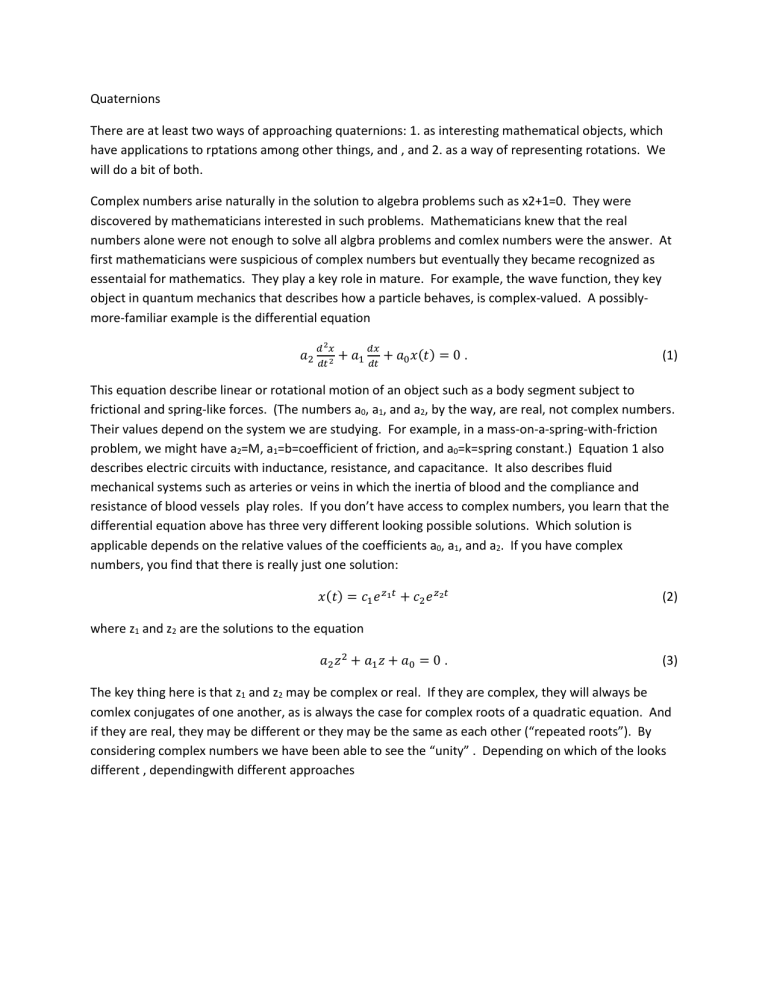
Quaternions
There are at least two ways of approaching quaternions: 1. as interesting mathematical objects, which have applications to rptations among other things, and , and 2. as a way of representing rotations. We will do a bit of both.
Complex numbers arise naturally in the solution to algebra problems such as x2+1=0. They were discovered by mathematicians interested in such problems. Mathematicians knew that the real numbers alone were not enough to solve all algbra problems and comlex numbers were the answer. At first mathematicians were suspicious of complex numbers but eventually they became recognized as essentaial for mathematics. They play a key role in mature. For example, the wave function, they key object in quantum mechanics that describes how a particle behaves, is complex-valued. A possiblymore-familiar example is the differential equation 𝑎
2 𝑑
2 𝑥 𝑑𝑡 2
+ 𝑎
1 𝑑𝑥 𝑑𝑡
+ 𝑎
0 𝑥(𝑡) = 0 . (1)
This equation describe linear or rotational motion of an object such as a body segment subject to frictional and spring-like forces. (The numbers a
0
, a
1
, and a
2
, by the way, are real, not complex numbers.
Their values depend on the system we are studying. For example, in a mass-on-a-spring-with-friction problem, we might have a
2
=M, a
1
=b=coefficient of friction, and a
0
=k=spring constant.) Equation 1 also describes electric circuits with inductance, resistance, and capacitance. It also describes fluid mechanical systems such as arteries or veins in which the inertia of blood and the compliance and resistance of blood vessels play roles. If you don’t have access to complex numbers, you learn that the differential equation above has three very different looking possible solutions. Which solution is applicable depends on the relative values of the coefficients a
0
, a
1
, and a
2
. If you have complex numbers, you find that there is really just one solution: 𝑥(𝑡) = 𝑐
1 𝑒 𝑧
1 𝑡 + 𝑐
2 𝑒 𝑧
2 𝑡
(2) where z
1
and z
2
are the solutions to the equation 𝑎
2 𝑧
2
+ 𝑎
1 𝑧 + 𝑎
0
= 0 . (3)
The key thing here is that z
1
and z
2
may be complex or real. If they are complex, they will always be comlex conjugates of one another, as is always the case for complex roots of a quadratic equation. And if they are real, they may be different or they may be the same as each other (“repeated roots”). By considering complex numbers we have been able to see the “unity” . Depending on which of the looks different , dependingwith different approaches


